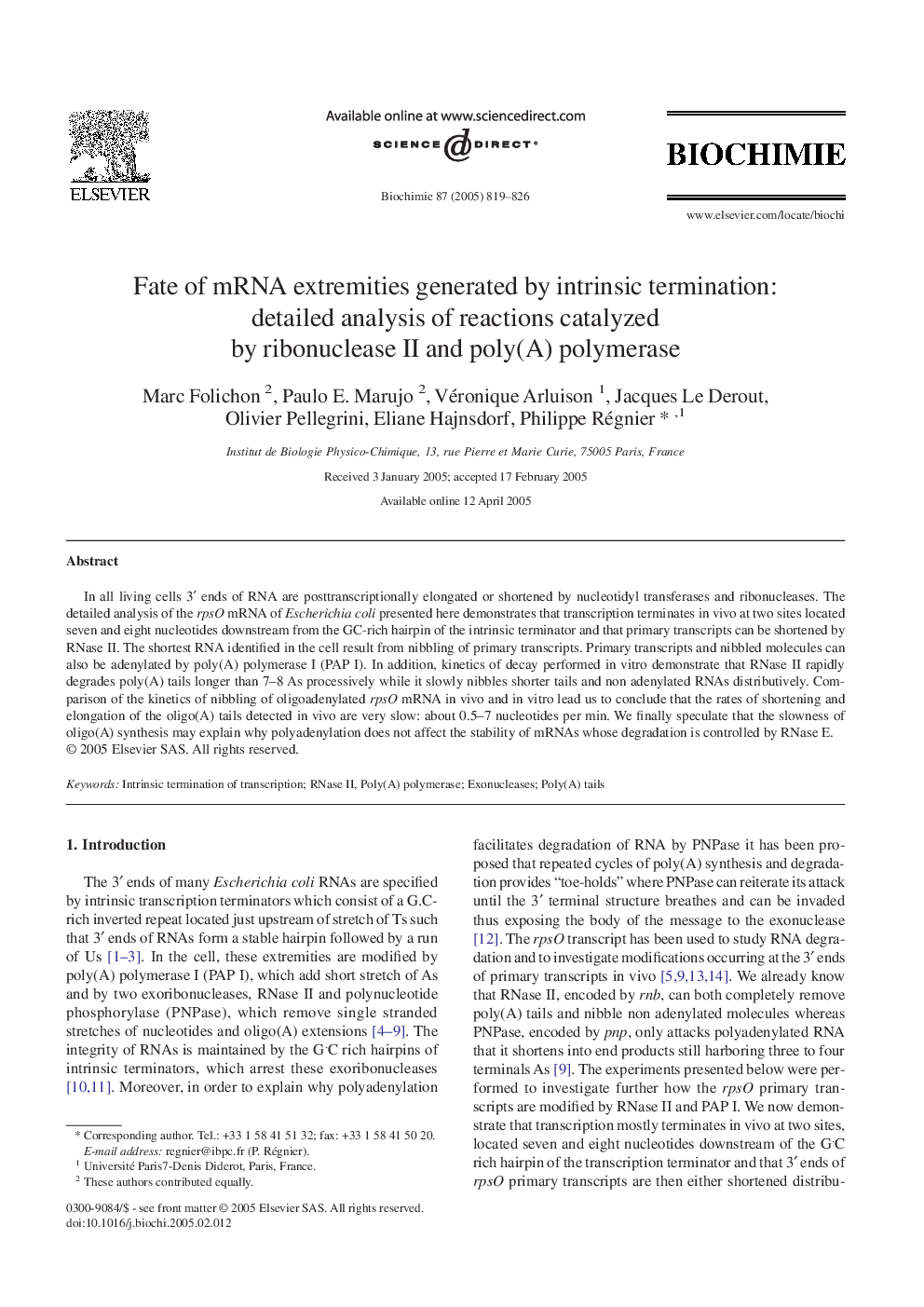| Article ID | Journal | Published Year | Pages | File Type |
|---|---|---|---|---|
| 9887786 | Biochimie | 2005 | 8 Pages |
Abstract
In all living cells 3â² ends of RNA are posttranscriptionally elongated or shortened by nucleotidyl transferases and ribonucleases. The detailed analysis of the rpsO mRNA of Escherichia coli presented here demonstrates that transcription terminates in vivo at two sites located seven and eight nucleotides downstream from the GC-rich hairpin of the intrinsic terminator and that primary transcripts can be shortened by RNase II. The shortest RNA identified in the cell result from nibbling of primary transcripts. Primary transcripts and nibbled molecules can also be adenylated by poly(A) polymerase I (PAP I). In addition, kinetics of decay performed in vitro demonstrate that RNase II rapidly degrades poly(A) tails longer than 7-8 As processively while it slowly nibbles shorter tails and non adenylated RNAs distributively. Comparison of the kinetics of nibbling of oligoadenylated rpsO mRNA in vivo and in vitro lead us to conclude that the rates of shortening and elongation of the oligo(A) tails detected in vivo are very slow: about 0.5-7 nucleotides per min. We finally speculate that the slowness of oligo(A) synthesis may explain why polyadenylation does not affect the stability of mRNAs whose degradation is controlled by RNase E.
Keywords
Related Topics
Life Sciences
Biochemistry, Genetics and Molecular Biology
Biochemistry
Authors
Marc Folichon, Paulo E. Marujo, Véronique Arluison, Jacques Le Derout, Olivier Pellegrini, Eliane Hajnsdorf, Philippe Régnier,
